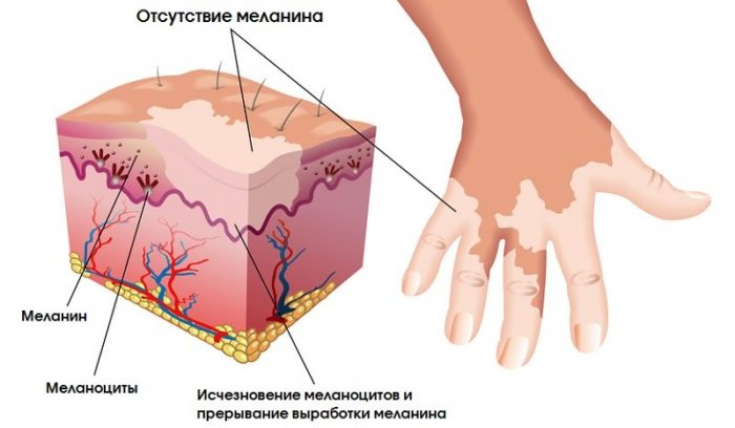Nationwide phase II clinical trial coordinated by Tufts Medical Center in Boston, USA shows that topical cream is extremely effective in reversing the effects of vitiligo — a common autoimmune disease that causes loss of skin pigmentation.
Topical application of a medicated cream, ruxolitinib (Ruxolitinibum), which is currently used as an oral treatment for certain blood disorders, resulted in a significant improvement in facial vitiligo symptoms in nearly half of study participants.
In the article estet-portal.com you can get acquainted in detail with the study of the effectiveness of a new revolutionary drug.
How relevant is the issue of effective treatment of vitiligo
There is no well-defined cause of vitiligo, a disease in which the immune system attacks the pigment cells in the body. Vitiligo can range from mild to severe and can affect any area of the skin, although it usually affects exposed areas such as the face and hands.
Although vitiligo does not appear at birth, about half of patients with vitiligo develop the disease before the age of 20.
About 50 million people (1% of the world's population) suffer from vitiligo.
Vitiligo is equally common in all ethnic groups, but more prominent in ethnic minorities with darker skin. There is currently no FDA-approved therapeutic method, which would lead to re-pigmentation of vitiligo.
Follow us on Facebook
Modern arsenal of vitiligo treatment
Unfortunately, vitiligo is often associated with social stigma, and this can cause significant psychological damage to patients. Current therapies such as phototherapy, topical corticosteroids, and calcineurin inhibitors (tacrolimus and pimecrolimus) have limited efficacy.

Phototherapy is generally more effective, but it can also be costly and time consuming, typically requiring patients to come to the office two to three times a week on a long-term basis.
Current treatment options for vitiligo are rather limited.
Ruxolitinib is part of a class of drugs called Janus kinase (JAK) inhibitors. These drugs disrupt the inflammatory pathway by blocking molecular signaling, resulting in an anti-inflammatory effect. Janus kinases play an important role in the development of vitiligo, and thus blocking them can be used to treat this disease.
Viticell — a new approach to the treatment of vitiligo
Research on a revolutionary new drug for the treatment of vitiligo
The largest 2-year randomized controlled trial of vitiligo ever conducted included 157 patients in 30 US locations. Participants daily or twice a day applied either ruxolitinib or placebo to an area of skin affected by vitiligo.

Approximately half of patients treated with ruxolitinib experienced a statistically significant improvement — about 50% experienced a reduction in facial depigmentation compared to 3% in the placebo group. Side effects of topical ruxolitinib were mild and included redness, application site irritation, and pustularity.
Vitiligo treatment: to be or not to be
Ruxolitinib — light at the end of the tunnel for a patient with vitiligo
Ruxolitinib could change the way you treat vitiligo. Not only is it effective for skin repair, but it also has an excellent safety profile. The researchers hope that many patients with vitiligo will experience an even better response with continued use of ruxolitinib over a long period of time, in combination with phototherapy and exposure to sunlight.
This therapy will ultimately be a game changer for the millions of people around the world who suffer from vitiligo.
Ruxolitinib topical cream has not yet been approved by the Food and Drug Administration for the treatment of vitiligo. According to the study's lead author, it will likely be approved for the treatment of atopic dermatitis (eczema) before it becomes available for people with vitiligo. This is because the FDA requires 3 rounds of research to be completed before a drug can be approved.
Thank you for staying with estet-portal.com. Read other interesting articles in the "Plastic Surgery" section. You may be interested in Melanocyte Transplantation — successful treatment for vitiligo







Add a comment